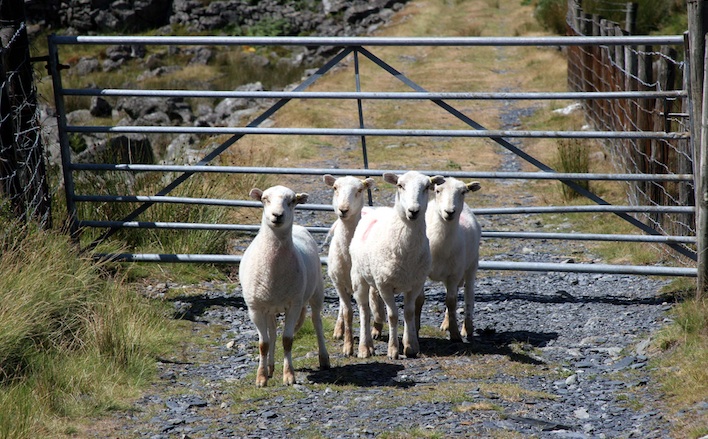Commentary on Acts 2:42-47
Acts, as the New Testament’s only book of ancient historiography, records Luke’s retelling of the earliest days of the church.
For Luke, the early church is an idyllic society marked by shared meals and prayers, awe or reverence, portents and signs, communal sharing and redistributive economics, ritual faithfulness, joy, good will, and growth. Whether or not this is a strictly historical portrait, there are strong catechetical reasons for Luke to portray the church in this way. Such a portrait points to Luke’s ideals of what a church community ought to be. Luke might also be painting this picture for political purposes, although it is not apparent whether Luke’s purpose is protest or pacification.
Coming immediately after the Pentecost narrative, the passage functions both as a summation of the Pentecost story, and a pivot toward the ministry of the church in Jerusalem (Acts 3-7). Luke, here, lays out the immediate consequences of the repentance and baptism of the Jewish (Acts 2:5) respondents to Peter’s Acts sermon; Gentiles will come later, in Acts 10.
Holding fast together
The Greek verb prokartereo rarely occurs in the New Testament. However, Luke uses it twice in this passage. The verb can be glossed as a description of attachment or persistence. Luke’s use of this verb in verse 42 and again in verse 46 underscores his depiction of an ethos of unity, commitment and commonality among the earliest church. Luke speaks of the earliest church as holding fast, or dedicating themselves to the teaching of the apostles and to the Temple.
For the earliest church community, the apostles become de facto religio-political leaders, taking the place normally ceded to the Sanhedrin leaders in Acts. Beyond Peter’s sermon, Luke does not tell us what “the apostles” might have been teaching, when, or in what format, whether privately or in public. However, this teaching leads the newly converted to dedicated and ongoing actions of attention to the apostle’s teaching, living in community, breaking of bread, and prayers.
Breaking bread
When Luke refers to “the breaking of the bread” a ritual action can be assumed, as the Greek word artos, or bread, occurs only five times in the Acts of the Apostles (the other three times in Acts 20:7, 11; 27:35), and in each case it seems to point to a ritual observance. This ritual was likely a precursor to the Lord’s Supper practiced in contemporary church. For Luke, it seems, one of the results of baptism is the communal partaking in the ritual feast of commemoration. However, this bread-breaking would have taken place in the context of a ritual meal. Meals, such as these hinted at by Luke, would have taken place in homes of wealthy patrons of the church. Their homes would have contained dining areas where the whole ekklesia, likely a small number, could recline at table.
Rising fear or awe
Verse 43 is structured as an inclusio; beginning and ending with the word egineto or “was coming to be.” Here, two phenomena are described as coming into being: fear (phobos) and portents and signs (terata kai semeia). “The Greek word phobos includes, in its semantic range, both the concepts of terror and of awe or reverence. Both are probably appropriate reactions to supernatural displays of power, although Luke does not say what those displays might be. Still, until Acts 5, (i.e. the death of Ananias and Sapphira), we are given no reason to consider that the word might connote terror.
Both the Pentecost story, earlier in Acts 2, and the miracle of the man at the Beautiful Gate, that follows in Acts 3 could be examples of the signs and portents intended by Luke. These seem to be told to provoke awe and reverence. Note also, that Luke does not specify which apostles are demonstrating portents and signs. Peter and John will distinguish themselves from the rest in chapter three, but nothing in this text suggests that they were alone in this regard.
Christian communitarianism
Selling, sharing and redistributing point subtly to the class differentials already present in Luke’s church. If some are able to sell their acquisitions and possessions and others “have need,” then their previous piety (these are all Jews who live in Jerusalem according to Luke) had not extended to economic and class matters. There are parallels here to Luke’s story of John the Baptist’s preaching (Luke 3:11), especially regarding the redistribution of economic resources.
In Luke, as in Acts, baptism and faithful observance bears both spiritual and economic consequences for the initiates. In addition, this story allows Luke to fast forward from the time the church is twelve members to a time of a significant and growing number. Scholars debate how soon after the resurrection these kinds of numbers would actually have been seen.
Praise, grace, and growth
Beyond the matter of economic sharing, Luke’s idealized vision of the early church is also marked by praise, grace, and growth. Praising God is an important part of Luke’s description. The economic sharing is not some dour requirement of a stringent otherworldly cult, but rather accompanied by the praises of God. Note, too, the role of the Temple in this praise of God; these are faithful Jews, and the Temple is, for them, the seat of God.
Acts does not become a book about Gentiles until much later. Further, the community is well regarded by the outsiders. That is, their way of living attracts others to come and live with them. Finally, the community is characterized by growth. However, the growth and salvation are not the work of the community; these are the works of God.
Theological Considerations
Luke’s narrative focuses less on theology than on ecclesiology, on what it means to be the church. Specifically, Luke portrays a church that lives in an attractively countercultural, joyful community, a church that prays, praises, breaks bread, and to which God keeps adding. This rather rosy depiction will develop shadows, contours and fractures later in Luke’s narrative.


May 7, 2017